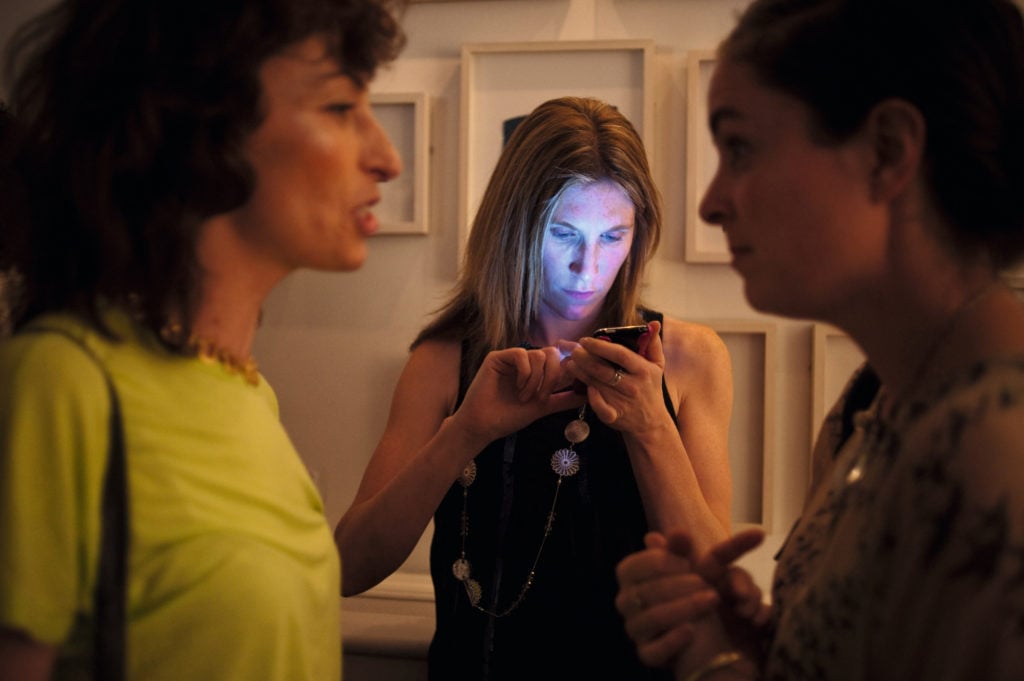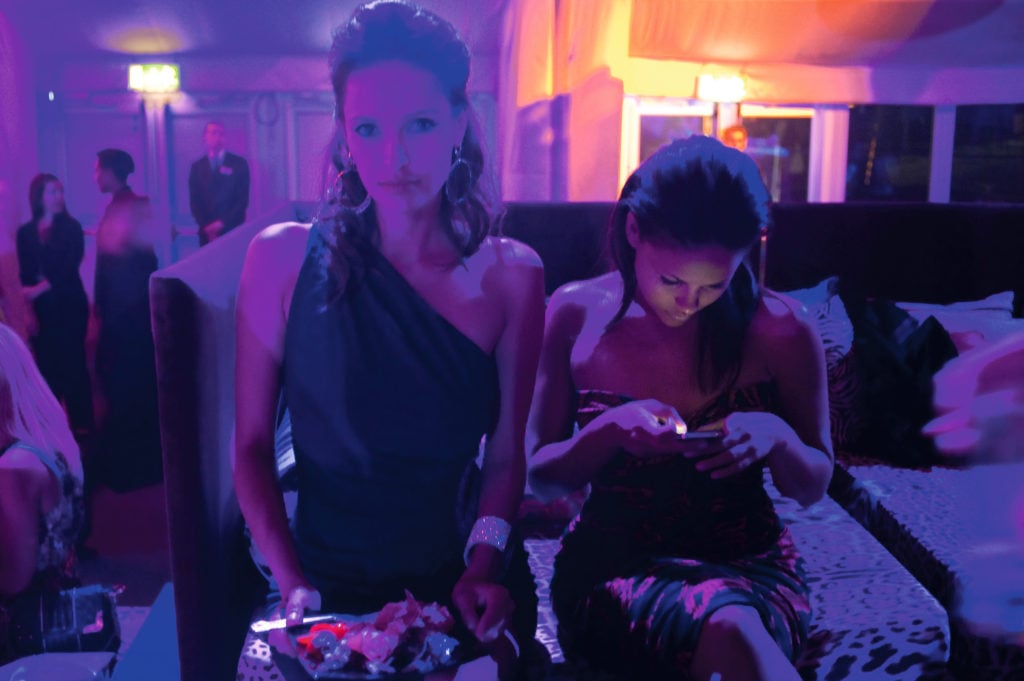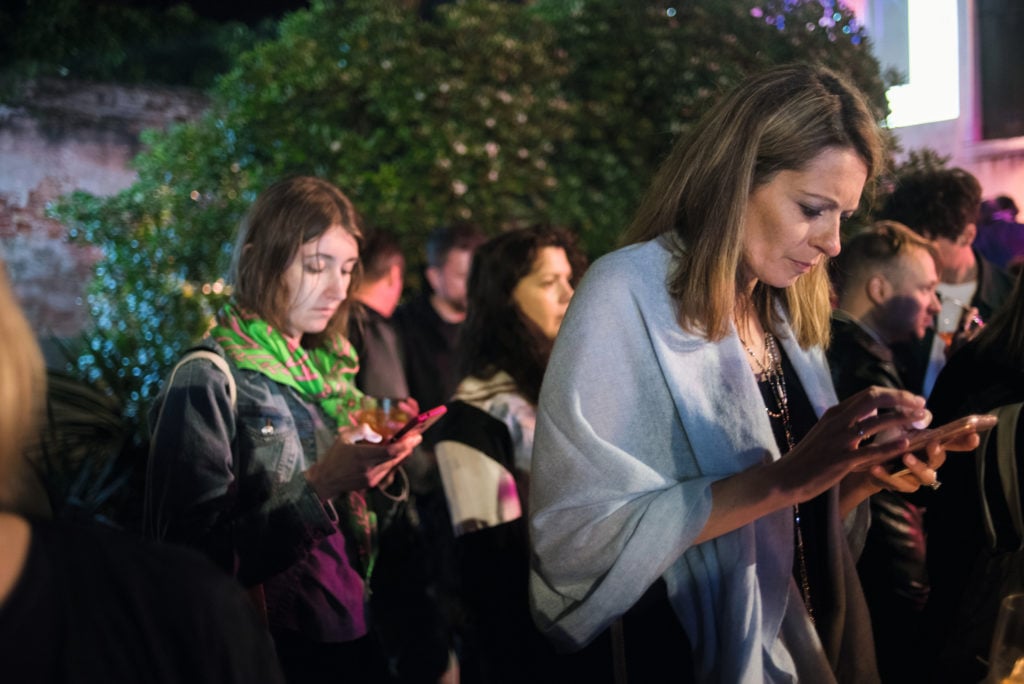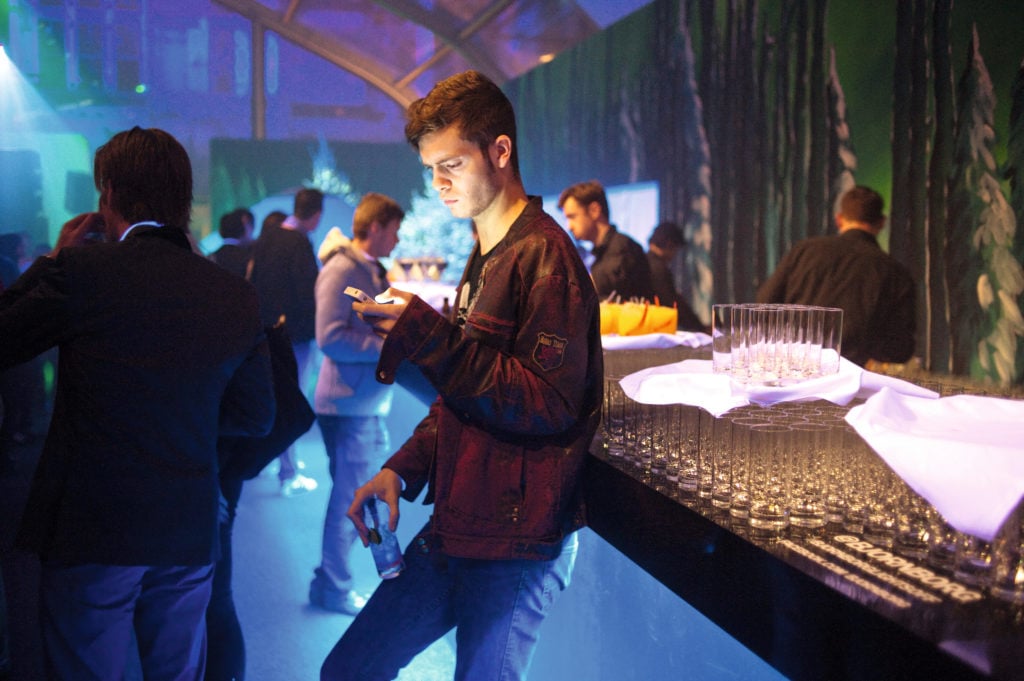Art World
A High-Society Photographer Has Captured the Way Smartphones Have Made Zombies Out of Guests at Elite Parties. It’s Disturbing
Dafydd Jones tirelessly captures VIPs, surrounded by glamour but still glued to their screens.

Dafydd Jones tirelessly captures VIPs, surrounded by glamour but still glued to their screens.

Karen Chernick

Dafydd Jones was on assignment a decade ago at a glamorous Art Basel in Miami Beach party, and he kept spotting people staring at their phones. The veteran English society photographer was there to shoot celebrities and people dressed to the nines; he thought it was a bit odd when he saw a man enraptured by his phone while ignoring the fabulous group of women surrounding him. This was just a year after the release of the first iPhone, and nomophobia (the fear of being without one’s cell phone) wasn’t yet a thing.
“Maybe he was texting his friends to tell them how lucky he was,” Jones muses, in a description of his recently released book, Screen Time. “Possibly he was a pioneer tweeter. Whatever his fixation, he was definitely missing the action.”

Screen Time, image courtesty of Dafydd Jones
Jones started noticing more and more instances of cell phone addiction—both among regular folks and celebrities, such as Damien Hirst, Stephen Fry, and Ronnie Wood—and he began documenting them while out on gigs for Tatler and Vanity Fair, among other magazines. “These pictures came about as a kind of by-product of other jobs,” Jones told Artnet News. “But gradually I was building up a collection.”
Jones’ collection is a hyper-exaggerated illustration of people who should be present in the moment, but are instead lost in digital reverie. The 100 color photographs in Screen Time aren’t of people checking their devices while in line at the supermarket, or while sitting on park benches as their kids play. Jones collects images of people at decadent parties and special events, surrounded by haute couture, fine art, and gilded architecture, all the while staring down into the hypnotic light of their mobile phone screens.

Screen Time, image courtesy of Dafydd Jones
After Circa Press became interested in publishing a book of Jones’s smartphone photos, he was sent on assignment to look specifically for these images. He added about 15 more on trips to New York and Venice, and played around with technique. “I began to switch the flash off,” Jones says. “I loved the eerie light, and photographing in challenging lighting conditions.”
Jones has documented our growing attachment to cell phones as these devices have become an indispensable part of our everyday lives. His photographs are playful, but he is genuinely concerned. “I think we are all becoming seriously addicted,” Jones warns. “And it is very worrying.”

Screen Time, image courtesy of Dafydd Jones